|
CURRENT ASTRONOMICAL CONDITIONS |
SOLAR SYSTEM All things held captive by the Sun. |
CONSTELLATIONS Everything else in the Universe |
|---|

|
CURRENT ASTRONOMICAL CONDITIONS |
SOLAR SYSTEM All things held captive by the Sun. |
CONSTELLATIONS Everything else in the Universe |
|---|

In the beginning, it was all magic.
Our earliest ancestors imagined super beings with magical powers that controlled the world around them. These magical deities were responsible for putting the lights in the sky, controlling the earthly elements, and steering the hearts and minds of lesser mortals. Everything that happened on Earth and in the sky was caused by magic.
Magic explained everything, and magic explained nothing, but it was the best ancient Earthlings could come up with. Eventually, however, as their mental abilities increased, they began to hypothesize, and experiment, and draw conclusions, and the scientific method was born. When this thinking was applied to the heavens, the science of astronomy developed: the empirical exploration of the Universe around us, and what makes it tick. The mother of all adventures had begun. A journey through the looking glass, to infinity and back again.
The results were astounding. The tiny twinkling lights that marched across the night sky turned out to be enormous suns, similar to our own Sun, except very much farther away. The handful of lights that moved contrary to all the others were named planets, from the Greek "planetes", for wanderers. These wandering lights were discovered to be much closer than the plethora of suns shining far behind them. The wanderers did not generate their own light, as the suns did, and were determined to be worlds, illuminated by the reflected light of our own Sun, about which they orbited, just as our Earth did. Our central Sun, with its attendant family of planets comprised our very own unique solar system. And most if not all of the countless far away suns that filled our night sky also had their own unique families of orbiting planets. And all these hundreds of billions of solar systems were contained within an enormous city of star systems called a galaxy. And it wasn't until the turn of the twentieth century, a mere hundred years ago, that we discovered our galaxy was only one of untold billions of galaxies that make up the incomprehensibly vast Universe around us.
Heady stuff, indeed, but hardly definitive. Instead of being the centre of the Universe, as the church had decreed for so long, we discovered we were rather small, fragile creatures, specifically evolved to exist on a small, fragile world, in a tiny, unremarkable corner of a seemingly infinite Universe that was larger and grander than our poor minds could even comprehend. Our understanding of the Cosmos grew by orders of magnitude, and it overwhelmed us. Our knowledge had begun to exceed our comprehension. The cosmic hand was still quicker than the mortal eye.
The magic refused to go away.
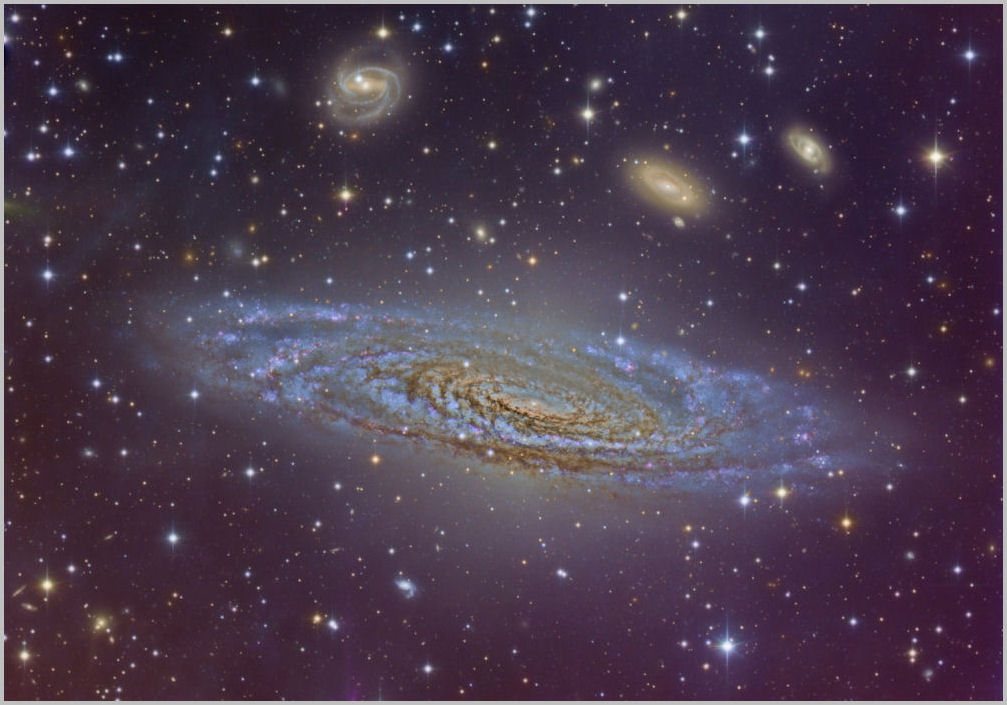
We discovered Black Holes that defied the laws of physics. They were invisible. Entire star systems disappeared inside them. Where did they go?
We found that photons of light sometimes behaved like particles, and sometimes like waves. How could they be both?
Subatomic quarks displayed the seemingly impossible ability to be in two places at once through a process called quantum entanglement, dubbed by Einstein as “spooky action at a distance.”
Calculations showed that the structure of the Universe could not be accounted for by the amount of matter it contained, leading scientists to the inescapable conclusion that there had to be something else out there, beyond our ability to detect. Some sort of invisible substance creating a gravitational framework that held the Universe together. They called this unknown substance dark matter.
Instead of the expansion of the Universe slowing down, as it should after an explosion like the Big Bang, the expansion was accelerating. Scientists could only attribute this to some sort of invisible force that caused the expansion of spacetime itself. They called this unknown force dark energy. Together with dark matter, these two phenomena were calculated to compose 97% of the Universe around us, and we knew virtually nothing about them.
At the end of the day, as much as we have learned about the science of the Cosmos, there is still a very great deal more that we do not understand, and when we escape from city lights, and are confronted with the staggering spectacle of a star filled sky, even the most dispassionate of souls is stirred. The majesty of the Cosmos is as overwhelming as it ever was.
The magic just goes on and on.
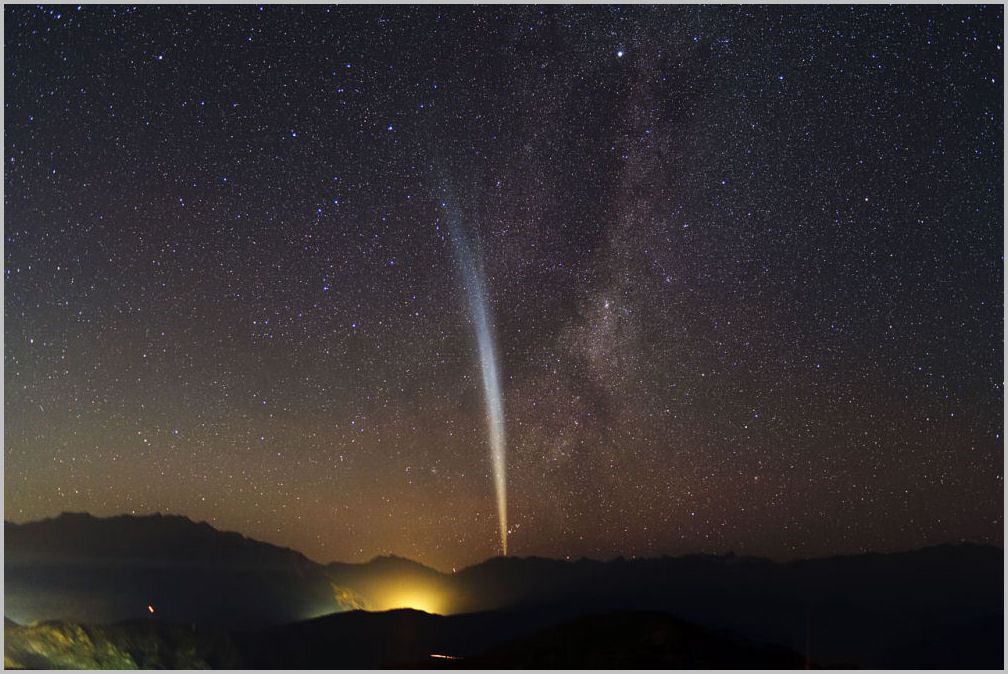
Of course the "fool on the hill" was no fool at all. Instead of the two dimensional illusion of "the sun going down" that most people saw, as grand and glorious as that was, he experienced the even more grand and glorious reality of the "world spinning round", rolling away from the warm, bright Sun, and taking him with it, to face the cold darkness of space. He felt the cosmic wind at his back, and the mighty planet rumble beneath his feet as it turned, great and ponderous on its axis, carrying him along like a tiny, microscopic flea on its back, into the night.
This type of enlightened perception is the ultimate reward of astronomy. The joy of seeing the true geometry and dynamic of the Universe around us, by training ourselves to add the third dimension of distance, and the fourth dimension of time to our mind's eye perception of the Universe.
We can practise with the Moon, consciously seeing it as the great three dimensional world it is, a planet in its own right, 2,000 miles across, 200,000 miles away, with the Sun hidden below the horizon, shining up like a giant spotlight, lighting up the side of the Moon's face like the profile of a lone actor on a dark stage.
And finally to add the fourth dimension of time, and understand that when we look at the sky, we are looking at the past. Pretty much everything up there is very far away, and since light can only travel so fast, we are seeing things as they were, in various stages of their past lives, depending on how far away they are. It takes about a half hour for the reflected light from Jupiter to reach Earth, meaning we are seeing the big planet as it was a half hour ago. Most of the stars we look at are as they were hundreds or thousands of years ago. It's like looking down through tunnels of time in space. When we look at the Andromeda Galaxy, the most distant object visible to the naked eye, we are looking down a tunnel 2.2 million years long.
To better understand the Cosmos that envelopes us, we have to transcend the stubborn two dimensional illusions our minds all too easily adopt, and feed them information and concepts and images that open them up and allow them to see, little by little, the grand reality of it all, each small step on the path to perception rewarded by a wonderful rush of endorphins, like sugar on our tongue - a taste of the infinite.
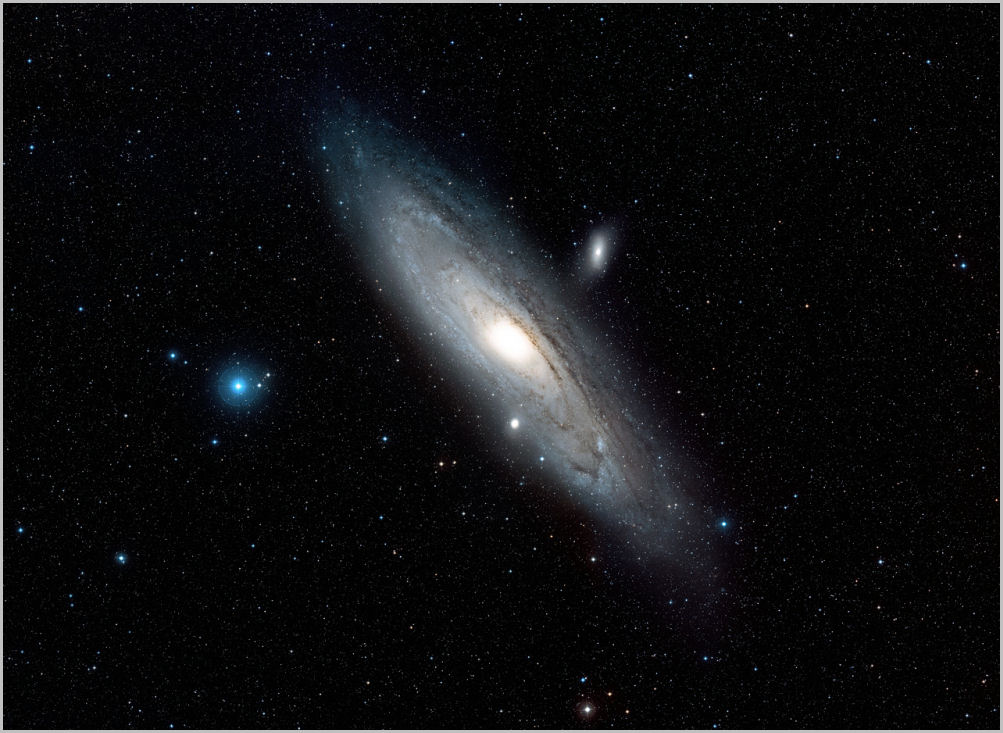
Some realities, sadly, are beyond our perception, no matter how hard we try. The capacities of our "frail and feeble minds", as Einstein put it, are limited. Nowhere is this more prevalent than in our perception of the vast distances in spacetime, and the unit of measurement: the light year. The light year is based on the speed of light, the fastest known speed in the Universe, and according to the present laws of physics as we understand them, the fastest speed possible.
This cosmic speed limit is 186,000 miles per second, or 670 million miles per hour, and we can use it to measure both space and time. A photon/wave of light travels a million miles in the time it takes to read this sentence (about five seconds), measuring both distance through space (a million miles), and distance through time (five seconds). To perceive the distance light travels in just that five seconds is beyond the reach of most of us. Perceiving the distance light travels in a year is impossible. We can calculate it, measure it, and explain it until the cows come home, but we can never actually perceive it.
To understand the futility of perceiving the distance light travels in a year, start by wrapping a string around the world, about 25,000 miles, and stretching that string out into space. Can you see the end of it, way out there, 25,000 miles away? Can you imagine it? How about doubling it, or tripling it? Maybe you can still imagine it, if you have an open, creative mind. How about 40 times that distance - a million miles? Your mind would have to be exceptionally open and creative to perceptually see the end of a string a million miles long. Now, how about 12 million miles, the distance light travels in one minute? If you can truly perceive the end of a twelve million mile long piece of string, you are a truly gifted mutant, with a mind much more capable than the rest of us. It's possible there are a few people like that out there, perhaps, amongst the billions that populate our planet, but I wouldn't bet on it.
And that's just the beginning! One lousy light minute. How can we possibly hope to imagine the staggering distance light can travel in a whole hour, or a day, let alone an entire year? If a light year was the length of a thousand football fields, we would be smaller than the smallest microscopic bacteria, and we have no more possibility of perceiving the distance of a light year than microscopic bacteria have of perceiving the length of a thousand football fields.
If we crunch the numbers, we can calculate the distance of a light year as 5,865,700,000,000 miles, or about six trillion miles (9.6 trillion kms). But numbers that large are nothing more than numbers. They are beyond our comprehension. And that's only one light year. The closest star to our Sun, Proxima Centauri, is 4.3 light years away, and most of the stars in our sky are very much farther away than that. Our galaxy stretches an amazing 100,000 light years across. And once we leave our galaxy, the next closest galaxy, the Andromeda Galaxy, is an incomprehensible 2.2 million light years away! We can say the words, we can write them down, we can do the math, but we cannot truly perceive what the words and numbers describe. We are like two dimensional beings living in a three dimensional world. Even when a third dimension is explained to us, and mathematically proven to exist, it's still impossible for us to see it, or to even imagine it.
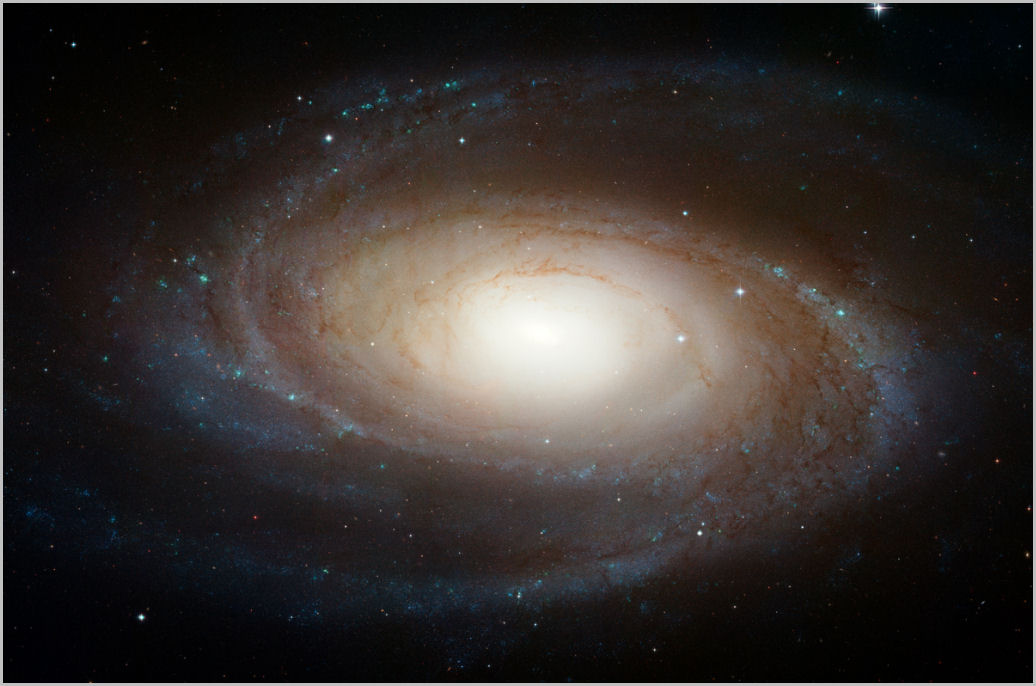
When it comes to the number of stars in our Universe, Carl Sagan's famous "billions and billions" says it all. There are more stars above our heads than all the grains of sand on all the beaches in all the world. And then some.
In 2004 the Hubble Space Telescope focused on one very tiny, very empty, very black spot in the sky in the constellation Fornax, where there was no hint of anything. It held that focus for one million seconds, a time exposure that lasted 11.6 days, to capture even the faintest trace of light, to see what - if anything - might be there. The results of that experiment were astounding, and gave us a whole new appreciation of the incomprehensible scale of the Universe we live in. The telescope captured the images of galaxies 13 billion light years away. As far back as the giant telescope could look, the Universe just kept going and going. The resultant photo was called the Hubble Ultra Deep Field, and it remains one of the most revealing, mind bending, iconic photographs ever taken.
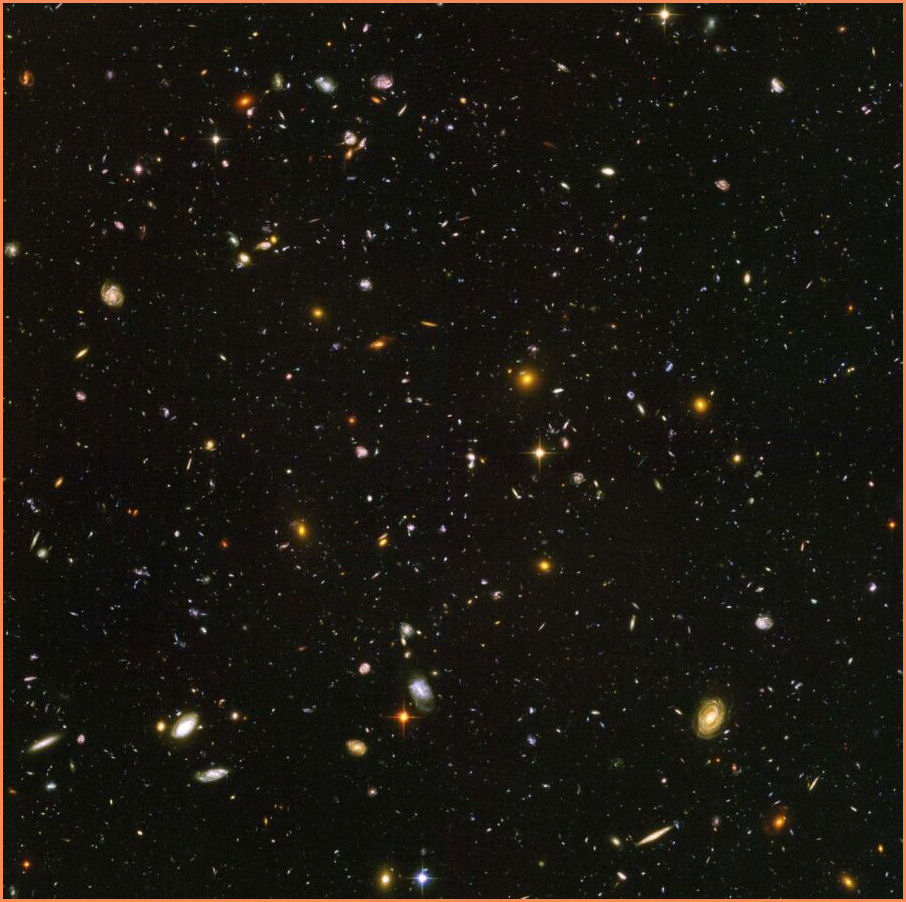
There are only four individual stars in the above Hubble Ultra Deep Field photo. Only four residents of our Milky Way Galaxy. Everything else, every blur, every smudge, every pinprick of light - too many to count - is a galaxy outside our own. Galaxies behind galaxies behind galaxies. Untold numbers of galaxies stretching 13 billion light years back through space and time. Each galaxy an island universe, containing hundreds of billions of stars like our Sun. And that is just one tiny, microscopic fraction of the sky. In one fell swoop, the Hubble Space Telescope has graphically illustrated just how small we really are, and how difficult it is to even begin to perceive the seemingly infinite scale of the Cosmos.
But that doesn't mean we shouldn't try. As the I Ching says, "Perseverance furthers," and if we keep at it, and truly open our minds, the fates will occasionally pull a corner of the cosmic curtain aside, and favor us with a quick glimpse of what's behind the magic. And sometimes a glimpse is all it takes to alter our perception, and change our life.
Thomas Carlyle's muse on the multitudes of stars in the night sky is a sentiment of the ages. Since the time of ancient Greece, there has been speculation about other forms of life somewhere, out there, among the stars. Over time, as science and technology revealed the true vastness of space, filled with untold numbers of suns like our own, it was logically assumed there must be many planets orbiting those suns. And surely on at least some of those planets, life must have evolved. It was simply a matter of numbers. But there was no proof, because any planets that might be out there were just too far away for even the most advanced telescopes to see. But eventually, technology was developed to measure the gravitational and electromagnetic effects of far away planets on the stars they orbit. The first extrasolar planet, or exoplanet, was discovered using these indirect methods in 1992. Since then over 1000 extrasolar planets have been discovered, including many similar to our Earth, and the search for extraterrestrial life on those planets is now in full swing.
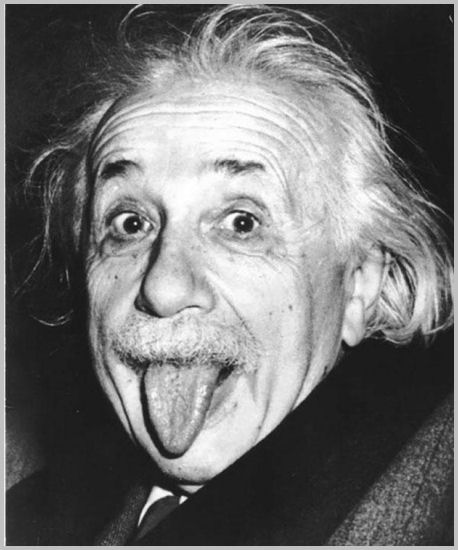
As Einstein proved, space and time are inseparable. They are two interwoven components of the same thing. When we look at a star 10 light years away, we are also looking ten years into the past, because it took ten years for the light from that star to reach us. We are being visited by a ghost who lived ten years ago. When we look at the Andromeda galaxy, we are being visited by a very old ghost indeed. A ghost that lived over 2 million years ago! We have no idea what the status of the Andromeda Galaxy is right now, if it still exists at all. And it makes us wonder if such speculation is even relevant? Is it even possible for two things so far apart to occupy the same moment in time?
Einstein also proved that the faster you move through space, the slower you move through time, and at the speed of light - 186,000 miles a second - time would theoretically come to a complete stop. Einstein discovered that time was not a linear constant as it appeared on the surface, plodding along in a static, predictable manner, but that time was in fact flexible, and mathematically at least, subject to manipulation. A concept as difficult to perceive as a light year, but just as real.
Someday Humans will undoubtedly learn to move through time, just as they learned to move over the oceans, and up into the air, and out into space.
But first things first. Let's get our bearings, and find our way around, starting with our own backyard: a group of planets and other things held captive by the gravity of a star called Sol - our solar system...
|
|
|
CONSTELLATIONS |
|
|
|---|